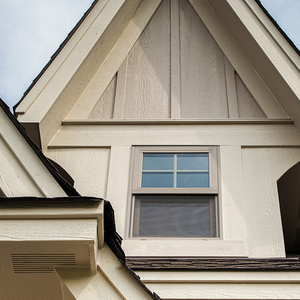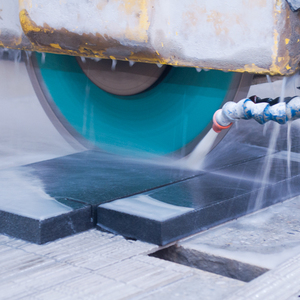
Image Credit: New Jersey Department of Health
The Occupational Health and Safety Administration is proposing new rules that would lower health risks for hundreds of thousands of U.S. construction workers routinely exposed to crystalline silica on the job.
OSHA said current limits, now more than 40 years old, are “outdated, inconsistent between industries, and do not adequately protect worker health.” The new regulations would save between 579 and 796 lives per year and prevent nearly 1,600 new cases of a deadly lung ailment called silicosis annually, the agency said.
Crystalline silica is a tiny particle, 100 times smaller than a grain of sand, produced when workers grind, cut, or crush stone, concrete, brick, mortar, or fiber-cement products. Common operations, such as cutting tile or fiber-cement siding, can generate silica-laden dust. OSHA said about 1.85 million construction workers in the United States are exposed to respirable crystalline silica, and that 640,000 of them are exposed to silica levels that exceed OSHA’s current permissible exposure limit (PEL).
“Exposure to silica dust can be extremely hazardous, and limiting that exposure is essential,” Dr. David Michaels, the assistant labor secretary for occupational safety and health, said in announcing the proposed rule change. “Every year, many exposed workers not only lose their ability to work, but also to breathe.”
Many industries in addition to construction expose workers to crystalline silica, OSHA says, including shipyards, dental laboratories, pottery factories, railroads, and foundries. One worker now suffering the effects of silica exposure is Alan White, a 48-year-old foundry worker who was invited to speak at the OSHA announcement Aug. 23.
White, who said he doesn’t smoke or drink, eats organic foods, and never knew he was exposed to silica on the job, nevertheless learned four years ago he will die from silica exposure. He still works at the foundry, but walking even relatively short distances is challenge. “Eventually I won’t be able to work at the plant,” he said. “I will probably be too young to retire or use my 401K. I don’t know what I will do.”
Public comment period open for 90 days
OSHA is proposing two separate standards: one for construction workers, and the other for general and maritime industries. OSHA said its approach would give employers the flexibility to design solutions suited to their particular workplaces.
In both cases, allowable limits of silica would be reduced to 50 micrograms per cubic meter of air, averaged over an eight-hour day. For construction workers, according to an account in The New York Times, this represents a decrease of 80% over the current limit of 250 micrograms per cubic meter of air.
The new rules will be the subject of a 90-day public comment period and then public hearings beginning in early March in Washington, D.C. Comments can be submitted online in a process described at OSHA’s web site.
OSHA’s proposal for construction workers would require employers to measure the amount of airborne silica if it “may be at or above an action level” of 25 micrograms per cubic meter of air. Workers would have to be protected from respirable silica above the 50 micrograms per cubic meter threshold. Worker access to areas where they might be exposed to silica above the PEL would be limited, OSHA said in summarizing the new rules. Workers also would be able to get medical exams and X-rays.
Health and labor organizations applaud move
The two most common methods for keeping silica exposure down are using water to keep the material wet, thus limiting the amount of dust that’s generated, and using a vacuum collection system to pick up the dust at the point where it’s produced.
OSHA predicted that complying with the new regulations would cost about $1,242 for the average workplace, with the annual cost to a firm with fewer than 20 employees less than $550. Yet the proposal would provide as much as $4.7 billion in net benefits each year over the next 60 years.
AFL-CIO safety and health director Peg Seminario said the proposed rule change was “very important” to worker health and that the 40-year-old standard now in place is inadequate. The American Public Health Association called the OSHA proposal “an important step in addressing a serious health hazard for workers.”
But on the business side, the American Chemistry Council’s Crystalline Silica Panel said in a prepared statement the current standard is enough to protect workers “provided it is adhered to strictly.”
The group said the silicosis mortality rate had declined by more than 90% from 1968 to 2010, adding: “While compliance with the current PEL is required and necessary to continue the reduction in silicosis, reducing the PEL is not.”
In a statement released Aug. 28, the National Association of Home Builders said the OSHA proposal “seems to call for one-size-fits-all measures that contradict existing safety and quality assurance practices for different types of contractors.”
NAHB said that some dust-control measures aren’t practical, such as spraying water inside a house while cutting a granite countertop, or spraying water while cutting asphalt roofing shingles in cold weather.
Compliance could cost the construction industry $1 billion a year, NAHB said, adding that if prescribed measures aren’t practical, some contractors might stop using products that contain silica.
“We need practical, science-based solutions that protect workers in all facets of construction,” NAHB Chairman Rick Judson said in a prepared statement. “Unfortunately, OSHA’s initial announcement about this proposed rule indicates we aren’t there yet.”
NAHB said the Construction Industry Safety Coalition, to which it belongs, was looking for “feasible and cost-effective” regulations on controlling silica.
Weekly Newsletter
Get building science and energy efficiency advice, plus special offers, in your inbox.















0 Comments
Log in or create an account to post a comment.
Sign up Log in